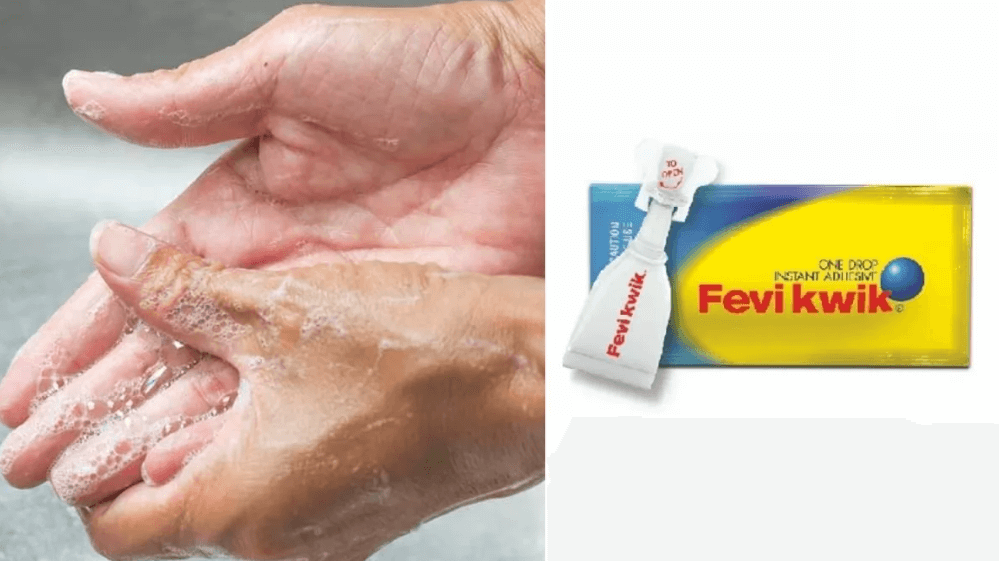Have you ever found yourself in a sticky situation with Feviquick? We’ve all been there – trying to fix something quickly and before we know it, our hands are covered in the strong adhesive. Don’t worry, though! Removing Feviquick from your hands can be done easily and safely with some tips and tricks. In this blog post, we’ll guide you through the process of removing Feviquick from your hands step-by-step. Plus, we’ll also discuss some potential side effects of using this powerful adhesive so that you can stay informed about its usage. Let’s get started! Read More…
What is Feviquick?
Feviquick is a popular adhesive that has been used by millions of people worldwide. It’s known for its strong bonding properties and quick-drying formula, which makes it an ideal choice for fixing things around the house.
The adhesive comes in a tube and is applied to surfaces using its nozzle tip. Once applied, it dries within seconds, creating a strong bond between two surfaces. This feature makes it incredibly useful when working on DIY projects or repairing items at home.
One thing to keep in mind when using Feviquick is that it should only be used as directed on the packaging. The adhesive can be harmful if ingested or comes into contact with eyes or skin.
Feviquick has become an essential tool for many households due to its convenience and effectiveness. However, as with any product containing chemicals, users must take precautions when handling it to avoid negative side effects.
How to Remove Feviquick from Hands
Feviquick is a popular adhesive used for various purposes, but it can be challenging to remove from hands once it dries out. The good news is that there are ways to safely and effectively remove Feviquick from your hands without causing any damage or irritation.
One of the easiest and most effective methods is to use acetone-based nail polish remover. Soak a cotton ball with the nail polish remover and gently rub it over the affected area until the glue dissolves. Be sure to wash your hands thoroughly with soap and warm water after using this method.
Another option is to use olive oil or coconut oil as a natural solvent. Simply apply a generous amount of oil onto the affected area and massage gently for several minutes until the glue starts peeling off. Once again, make sure you wash your hands thoroughly afterward.
If neither of these methods works, try using vinegar or rubbing alcohol instead. Soak a cloth in either solution and apply it directly onto the affected area for about 10-15 minutes before rinsing off with warm water.
It’s essential to avoid using harsh chemicals such as turpentine or gasoline as they can cause skin irritation, allergic reactions, or even chemical burns.
In summary, removing Feviquick from your hands doesn’t have to be difficult if done correctly; always choose safe options like acetone-based nail polish remover, olive oil/coconut oil, vinegar/rubbing alcohol while avoiding harsh chemicals at all costs!
Side Effects of Feviquick
Feviquick is a popular adhesive that is commonly used for various purposes. While it can be helpful in many situations, using Feviquick also comes with certain risks and side effects.
One of the most common side effects of Feviquick is skin irritation. If you accidentally get this adhesive on your hands or any other part of your body, it can cause redness, itching, burning or swelling. In some cases, prolonged exposure to the adhesive may even lead to blisters or chemical burns.
Another potential risk associated with Feviquick use is inhalation hazards. The fumes released by the adhesive contain harmful chemicals which may cause respiratory problems such as coughing, wheezing or shortness of breath. It’s important to use this product only in well-ventilated areas and avoid direct inhalation of its vapors.
Ingestion of Feviquick can also be dangerous and should be avoided at all costs. Swallowing even small amounts of this substance can lead to serious health complications such as nausea, vomiting, abdominal pain or diarrhea.
While Feviquick can be a useful tool for bonding materials together quickly and easily; however it should always be handled with care to minimize its potential risks and side effects.
Conclusion
Feviquick is a popular adhesive used in various industries, households and day-to-day life. While its versatility has made it a go-to product for many people, its sticky nature can sometimes prove to be difficult to remove from hands.
However, with the tips shared above on how to remove Feviquick from hands safely and effectively, you should be able to get rid of any residue without causing harm or irritation to your skin.
It’s important to note that prevention is always better than cure when it comes to handling strong adhesives like Feviquick. Always wear protective gloves when using these products, and avoid direct contact with your skin as much as possible.
By following all these guidelines carefully and taking extra care while handling such strong adhesives, you can ensure that your work is safe and efficient without compromising on the health of your skin.





 Revealing Kim Taehyung’s Weight – Insights into the BTS Star’s Physical Fitness Journey
Revealing Kim Taehyung’s Weight – Insights into the BTS Star’s Physical Fitness Journey